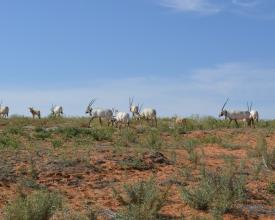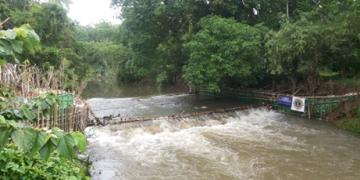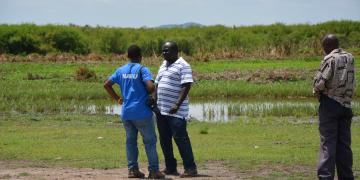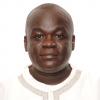Ecosystem Restoration through Community Engagement, Imam Turki bin Abdullah Royal Nature Reserve (ITBA) -Saudi Arabia

ITBA spanning 91,500 km², is one of Saudi Arabia’s largest and most ecologically diverse protected areas, encompassing sand dunes, wadis, steppes, plains, plateaus, and floodplains. Declared 2018 after decades of degradation, its vegetation cover was below 4%. The Reserve adopts a community-based approach for ecosystem restoration through developing sustainable rangeland management programs and active reforestation initiatives. ITBA has since shown remarkable recovery. Surveys identified 235 plant species, 10 mammals, 30 reptiles, 184 birds with nine globally threatened species. Restoration efforts include planting over 775,000 native trees, reintroducing of 460 wild animals including Arabian oryx, sand gazelle, ostrich, and houbara. Satellite monitoring shows vegetation density rising from 3.6% in 2020 to 9.4% in 2025, with wadis and depressions most productive. Rangeland condition has shifted toward recovery, benefiting biodiversity and over 12,000 herders who save SAR 17.6 million per season.
Impacts
- Vegetation recovery: Vegetation cover in the northern protected sector expanded from 63.68 km² in 2020 to 723.87 km² in 2025 (+1037%). Reserve-wide vegetation cover reached 8,638 km² (9.44%) in 2025, marking an increase from 2024 levels.
- Habitat diversity: The Al-Taysiyah core zone encompasses 1,526 km² of dunes, 1,067 km² of sandy plains, 772 km² of plateaus, 835 km² of steppes, 542 km² of wadis, and 38 km² of flood plains.
- Plant diversity: A total of 235 species has been recorded, including 133 annuals and 102 perennials, across 47 families and 16 vegetation communities.
- Restoration efforts: More than 775,400 trees.
- Wildlife breeding success: Sand gazelle (110), Arabian oryx (66), rock hyrax (21), Arabian hare (25), red-necked ostrich (28), Arabian gazelle (2), Asian houbara (16).
- Reintroduction of kye species: A total of 460 wild animals including, Sand gazelle (116), Arabian oryx (77), rock hyrax (8), Arabian hare (20), Asian houbara (236), red-necked ostrich (3).
- Rangeland condition: The rangeland conditions improved from high severity to the following categories: Severely degraded (2,434 km²), degraded (6,381 km²), medium (922 km²), and good (1,190 km²).
- Community benefits: Seasonal grazing supports over 12,000 herders, reducing costs by 160 SAR per camel/month, equivalent to 3.52 million SAR monthly and 17.6 million SAR per 5-month grazing season.





